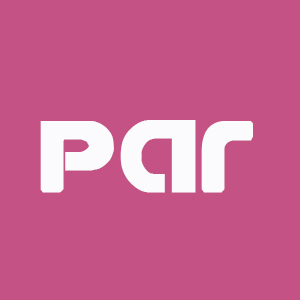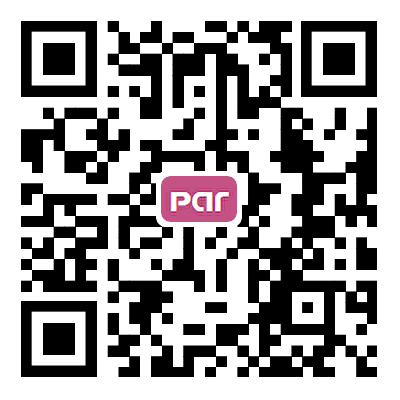REFERENCES
1. Aimar A, Palermo A, Innocenti B. The role of 3D printing in medical applications: a state of the art. J Healthc Eng 2019;2019:5340616.
2. Cevik J, Seth I, Hunter-Smith DJ, Rozen WM. A history of innovation: tracing the evolution of imaging modalities for the preoperative planning of microsurgical breast reconstruction. J Clin Med 2023;12:5246.
3. Chae MP, Chung RD, Smith JA, Hunter-Smith DJ, Rozen WM. The accuracy of clinical 3D printing in reconstructive surgery: literature review and in vivo validation study. Gland Surg 2021;10:2293-303.
4. Chae MP, Hunter-Smith DJ, Chung RD, Smith JA, Rozen WM. 3D-printed, patient-specific DIEP flap templates for preoperative planning in breast reconstruction: a prospective case series. Gland Surg 2021;10:2192-9.
5. Cevik J, Hunter-Smith DJ, Rozen WM. Current advances in breast reconstruction. J Clin Med 2022;11:3328.
6. Choi JW, Kim N. Clinical application of three-dimensional printing technology in craniofacial plastic surgery. Arch Plast Surg 2015;42:267-77.
7. Lynn AQ, Pflibsen LR, Smith AA, Rebecca AM, Teven CM. Three-dimensional printing in plastic surgery: current applications, future directions, and ethical implications. Plast Reconstr Surg Glob Open 2021;9:e3465.
8. Han HH, Shim JH, Lee H, et al. Reconstruction of complex maxillary defects using patient-specific 3D-printed biodegradable scaffolds. Plast Reconstr Surg Glob Open 2018;6:e1975.
9. Bauermeister AJ, Zuriarrain A, Newman MI. Three-dimensional printing in plastic and reconstructive surgery: a systematic review. Ann Plast Surg 2016;77:569-76.
10. Langridge B, Momin S, Coumbe B, Woin E, Griffin M, Butler P. Systematic review of the use of 3-dimensional printing in surgical teaching and assessment. J Surg Educ 2018;75:209-21.
11. Salazar D, Thompson M, Rosen A, Zuniga J. Using 3D printing to improve student education of complex anatomy: a systematic review and meta-analysis. Med Sci Educ 2022;32:1209-18.
12. Chae MP, Hunter-Smith DJ, Rostek M, Smith JA, Rozen WM. Enhanced preoperative deep inferior epigastric artery perforator flap planning with a 3D-printed perforasome template: technique and case report. Plast Reconstr Surg Glob Open 2018;6:e1644.
13. Claudic Y, Zopf DA, Ozkan M, Francia RD, Hu W. Current use of 3D printing in plastic surgery. Ann 3D Print Med 2023;11:100119.
14. AlAli AB, Griffin MF, Calonge WM, Butler PE. Evaluating the use of cleft lip and palate 3D-printed models as a teaching aid. J Surg Educ 2018;75:200-8.
15. AlReefi MA, Nguyen LH, Mongeau LG, et al. Development and validation of a septoplasty training model using 3-dimensional printing technology. Int Forum Allergy Rhinol 2017;7:399-404.
16. Podolsky DJ, Fisher DM, Wong Riff KW, et al. Assessing technical performance and determining the learning curve in cleft palate surgery using a high-fidelity cleft palate simulator. Plast Reconstr Surg 2018;141:1485-500.
17. Page MJ, McKenzie JE, Bossuyt PM, et al. The prisma 2020 statement: an updated guideline for reporting systematic reviews. BMJ 2021;372:n71.
18. Higgins JPT, Altman DG, Gøtzsche PC, et al; Cochrane Bias Methods Group, Cochrane Statistical Methods Group. The Cochrane Collaboration’s tool for assessing risk of bias in randomised trials. BMJ 2011;343:d5928.
19. National Institute of Health. Study quality assessment tools. Available from: https://www.nhlbi.nih.gov/health-topics/study-quality-assessment-tools. [Last accessed on 14 Aug 2024].
20. D’Souza N, Mainprize J, Edwards G, Binhammer P, Antonyshyn O. Teaching facial fracture repair: a novel method of surgical skills training using three-dimensiona biomodels. Plast Surg 2015;23:81-6.
21. Berens AM, Newman S, Bhrany AD, Murakami C, Sie KC, Zopf DA. Computer-aided design and 3D printing to produce a costal cartilage model for simulation of auricular reconstruction. Otolaryngol Head Neck Surg 2016;155:356-9.
22. Podolsky DJ, Fisher DM, Wong KW, Looi T, Drake JM, Forrest CR. Evaluation and implementation of a high-fidelity cleft palate simulator. Plast Reconstr Surg 2017;139:85e-96e.
23. Brichacek M, Diaz-Abele J, Shiga S, Petropolis C. Three-dimensional printed surgical simulator for kirschner wire placement in hand fractures. Plast Reconstr Surg Glob Open 2018;6:e1706.
24. Cheng H, Podolsky DJ, Fisher DM, et al. Teaching palatoplasty using a high-fidelity cleft palate simulator. Plast Reconstr Surg 2018;141:91e-8e.
25. Cote V, Schwartz M, Arbouin Vargas JF, et al. 3-Dimensional printed haptic simulation model to teach incomplete cleft palate surgery in an international setting. Int J Pediatr Otorhinolaryngol 2018;113:292-7.
26. Eastwood KW, Bodani VP, Haji FA, Looi T, Naguib HE, Drake JM. Development of synthetic simulators for endoscope-assisted repair of metopic and sagittal craniosynostosis. J Neurosurg Pediatr 2018;22:128-36.
27. Reighard CL, Green K, Rooney DM, Zopf DA. Development of a novel, low-cost, high-fidelity cleft lip repair surgical simulator using computer-aided design and 3-dimensional printing. JAMA Facial Plast Surg 2019;21:77-9.
28. Cheng D, Yuan M, Perera I, et al. Developing a 3D composite training model for cranial remodeling. J Neurosurg Pediatr 2019;24:632-41.
29. Iida C, Sakamoto Y, Ohara H, Ogata H, Kishi K. Simulation training for alveolar cleft closure using a double-size solid model. J Plast Reconstr Aesthet Surg 2020;73:783-808.
30. Kantar RS, Gonchar M, Maliha SG, et al. Three-dimensional affordable stone models for cleft lip markings: a prospective study of learner satisfaction. Ann Plast Surg 2019;83:340-3.
31. Powell AR, Srinivasan S, Green G, Kim J, Zopf DA. Computer-aided design, 3-D-printed manufacturing, and expert validation of a high-fidelity facial flap surgical simulator. JAMA Facial Plast Surg 2019;21:327-31.
32. Riedle H, Burkhardt AE, Seitz V, et al. Design and fabrication of a generic 3D-printed silicone unilateral cleft lip and palate model. J Plast Reconstr Aesthet Surg 2019;72:1669-74.
33. Oh CJ, Tripathi PB, Gu JT, Borden P, Wong BJ. Development and evaluation of rhinoplasty spreader graft suture simulator for novice surgeons. Laryngoscope 2019;129:344-50.
34. Lobb DC, Cottler P, Dart D, Black JS. The use of patient-specific three-dimensional printed surgical models enhances plastic surgery resident education in craniofacial surgery. J Craniofac Surg 2019;30:339-41.
35. Chang B, Powell A, Ellsperman S, et al. Multicenter advanced pediatric otolaryngology fellowship prep surgical simulation course with 3D printed high-fidelity models. Otolaryngol Head Neck Surg 2020;162:658-665.
36. Jovic TH, Combellack EJ, Jessop ZM, Whitaker IS. Using 3D Printing technology to teach cartilage framework carving for ear reconstruction. Front Surg 2020;7:44.
37. Reighard CL, Powell AR, Zurawski TY, Rooney DM, Keilin CA, Zopf DA. Development of a novel mandibular distraction osteogenesis simulator using Computer Aided Design and 3D printing. Int J Pediatr Otorhinolaryngol 2021;142:110616.
38. Papavasiliou T, Nicholas R, Cooper L, et al. Utilisation of a 3D printed ex vivo flexor tendon model to improve surgical training. J Plast Reconstr Aesthet Surg 2022;75:1255-60.
39. Gupta N, Fitzgerald CM, Ahmed MT, Tohidi S, Winkler M. Feasibility of a 3D printed nasal model for resident teaching in rhinoplasty. J Plast Reconstr Aesthet Surg 2021;74:2776-820.
40. Nicholas R, Heinze Z, Papavasiliou T, et al. Educational impact of a novel cleft palate surgical simulator: improvement in surgical trainees’ knowledge and confidence. J Plast Reconstr Aesthet Surg 2022;75:3817-25.
41. Geoghegan L, Papadopoulos D, Petrie N, Teo I, Papavasiliou T. Utilization of a 3D printed simulation training model to improve microsurgical training. Plast Reconstr Surg Glob Open 2023;11:e4898.
42. Khoo R, Ryan E, Vijayasekaran V, Gillett DA. Cleft lip repair simulation: an Australian trainee experience. AJOPS 2023;6:1-8.
43. Wright JM, Ford JM, Qamar F, et al. Design and validation of a 3D printed cranio-facial simulator: a novel tool for surgical education. Cleft Palate Craniofac J 2024;61:997-1006.
44. Podolsky DJ, Murphy BD, Ahmad J, et al. Development and evaluation of a high-fidelity rhinoplasty simulator. Plast Reconstr Surg 2024;153:619-22.
45. Schlegel L, Malani E, Belko S, et al. Design, printing optimization, and material testing of a 3D-printed nasal osteotomy task trainer. 3D Print Med 2023;9:20.
46. Witsberger CA, Michaels R, Monovoukas D, et al. Development of a high-fidelity, 3D printed otoplasty surgical simulator. Ann Otol Rhinol Laryngol 2023;132:607-13.
47. Lane JC, Black JS. Modeling medical education: the impact of three-dimensional printed models on medical student education in plastic surgery. J Craniofac Surg 2020;31:1018-21.
48. Hweidi AS, Massoud K, Zidane A, Ghanem M. A novel 3D model for training on basics of cleft palate surgery: development and validation study. Egypt J Plast Reconstr Surg 2021;45:7-14.
49. Yang SF, Powell A, Srinivasan S, et al. Addressing the pandemic training deficiency: filling the void with simulation in facial reconstruction. Laryngoscope 2021;131:E2444-8.
50. Al-Badri N, Touzet-Roumazeille S, Nuytten A, Ferri J, Charkaluk ML, Nicot R. Three-dimensional printing models improve long-term retention in medical education of pathoanatomy: a randomized controlled study. Clin Anat 2022;35:609-15.
51. Nicot R, Druelle C, Chazard E, et al. Three-dimensional printing model enhances craniofacial trauma teaching by improving morphologic and biomechanical understanding: a randomized controlled study. Plast Reconstr Surg 2022;149:475e-84e.
52. Lerner JL, Vishwanath N, Borrelli MR, Rao V, Crozier J, Woo AS. A cost-effective, 3D printed simulation model facilitates learning of bilobed and banner flaps for mohs nasal reconstruction: a pilot study. Plast Reconstr Surg 2024;154:358e-61e.
53. Rama M, Schlegel L, Wisner D, et al. Using three-dimensional printed models for trainee orbital fracture education. BMC Med Educ 2023;23:467.
54. Ford S, Minshall T. Invited review article: where and how 3D printing is used in teaching and education. Addit Manuf 2019;25:131-50.
55. Ford S, Minshall T. 3D printing in education: a literature review. 2016. Available from: https://www.researchgate.net/profile/Simon-Ford-3/publication/308204531_3D_printing_in_education_a_literature_review/links/5c196d35a6fdccfc70586e3a/3D-printing-in-education-a-literature-review.pdf. [Last accessed on 14 Aug 2024].
56. Chae MP, Hunter-smith DJ, Rozen WM. Imaging and printing in plastic and reconstructive surgery part 2: emerging techniques. Australas J Plast Surg 2019;2:69-77.
57. Li K, Kui C, Lee E, et al. The role of 3D printing in anatomy education and surgical training: a narrative review. MedEdPublish 2017;6:92.
58. Garcia J, Yang Z, Mongrain R, Leask RL, Lachapelle K. 3D printing materials and their use in medical education: a review of current technology and trends for the future. BMJ Simul Technol Enhanc Learn 2018;4:27-40.
59. Leung G, Pickett AT, Bartellas M, et al. Systematic review and meta-analysis of 3D-printing in otolaryngology education. Int J Pediatr Otorhinolaryngol 2022;155:111083.
60. To G, Hawke JA, Larkins K, et al. A systematic review of the application of 3D-printed models to colorectal surgical training. Tech Coloproctol 2023;27:257-70.
61. Blohm JE, Salinas PA, Avila MJ, Barber SR, Weinand ME, Dumont TM. Three-dimensional printing in neurosurgery residency training: a systematic review of the literature. World Neurosurg 2022;161:111-22.
62. Tack P, Victor J, Gemmel P, Annemans L. 3D-printing techniques in a medical setting: a systematic literature review. Biomed Eng Online 2016;15:115.
63. Diaz-Siso JR, Plana NM, Stranix JT, Cutting CB, McCarthy JG, Flores RL. Computer simulation and digital resources for plastic surgery psychomotor education. Plast Reconstr Surg 2016;138:730e-8e.
64. Cevik J, Rozen W. A novel optimization technique of computed tomography angiographic 3D-reconstructions for pre-operative planning of DIEP flaps. JPRAS Open 2023;35:38-41.
65. Chae MP, Hunter-smith DJ, Rozen WM. Imaging and printing in plastic and reconstructive surgery part 1: established techniques. Australas J Plast Surg 2019;2:15-28.
66. Kaplan N, Marques M, Scharf I, et al. Virtual reality and augmented reality in plastic and craniomaxillofacial surgery: a scoping review. Bioengineering 2023;10:480.
67. Cheng L, Matinrazm S, Kass N, et al. Augmented reality in plastic and reconstructive surgery: what it is, how far it’s come, and the limitations impacting further adoption. Plast Reconstr Surg Glob Open 2023;11:112-3.
68. Cevik J, Seth I, Rozen WM. Transforming breast reconstruction: the pioneering role of artificial intelligence in preoperative planning. Gland Surg 2023;12:1271-5.
69. Guerrero DT, Asaad M, Rajesh A, Hassan A, Butler CE. Advancing surgical education: the use of artificial intelligence in surgical training. Am Surg 2023;89:49-54.
70. Winkler-Schwartz A, Bissonnette V, Mirchi N, et al. Artificial intelligence in medical education: best practices using machine learning to assess surgical expertise in virtual reality simulation. J Surg Educ 2019;76:1681-90.








